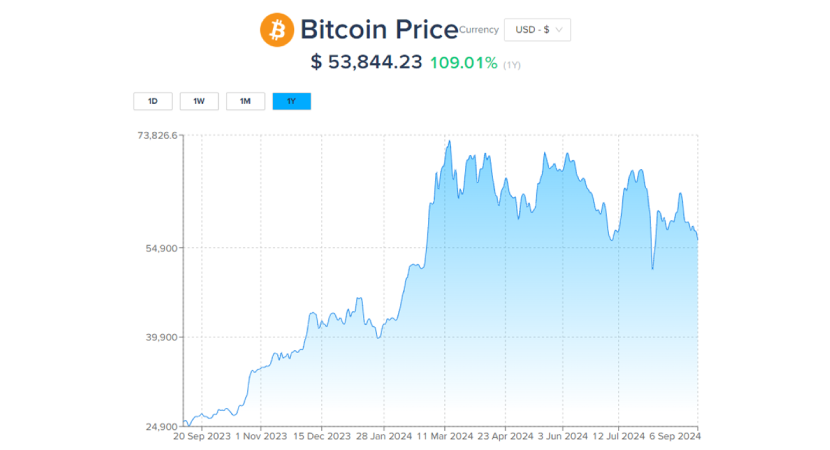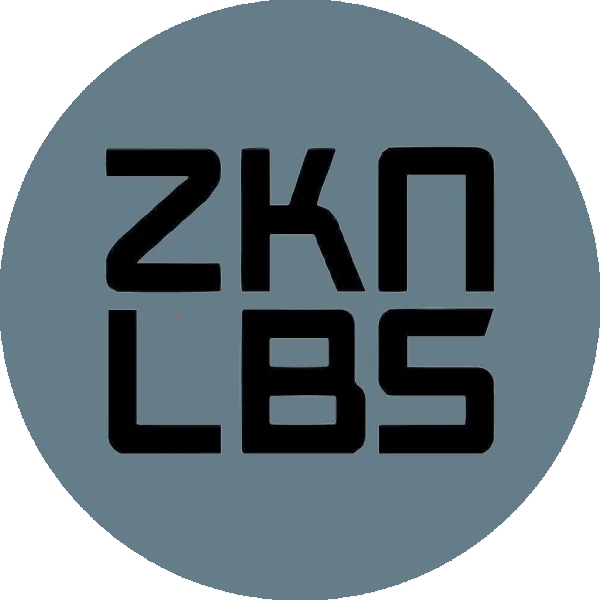Before starting investing in cryptocurrencies, bear in mind that every investor should implement an investment strategy that suits his risk tolerance, time and funds availability, financial goals, timeframe, and more personal factors. Investors usually have to decide between two main investment strategies: Hodling vs trading crypto. Hodling means accumulating cryptocurrencies and keeping them for a long period of time, while trading means opening and closing trades in a short timeframe, which could be minutes, hours, days, or weeks. But are both strategies suited for all kinds of investors? HODLing is more suited for long-term investors who strongly believe in the underlying value of blockchain technology, aiming for good returns in the long term thanks to price appreciation over time. On the contrary, in trading, people want to capitalize on short-term movements of the market, aiming to generate superior returns compared to “simple” hodling. In this in-depth analysis, we’ll compare HODLing vs trading crypto and discover which strategy is more suited for you!
HODLing: What is it?
The term “Hodl” (“Hold on for dear life”) comes from a typo in an early Bitcointalk forum post, where a user, named GameKyuubi, instead of writing “I am holding”, wrote “I am hodling”. From this typo, the crypto community adopted this term to create an evergreen philosophy: Buy crypto and hold it for a long period without considering temporary market trends and volatility, believing that its underlying value will grow over time. Basically, it’s a mindset of a large percentage of crypto enthusiasts, and behind this term lies an optimistic approach to cryptocurrencies. Considering the historical performance of Bitcoin, it can be considered a great strategy that requires low effort and brings good results. However, as we always state in our educational content, past performances are not representative of future results, and this strategy might not be so effective in all cases, but for Bitcoin, it was.
HODLing also allows investors to have peace of mind because even if the markets crash, they are supposed to not sell or take any actions at all. On the contrary, for more aggressive investors, a market crash could be a good opportunity to “buy the dip”, and increase their crypto bags. People who hodl, in fact, usually implement strategies such as Dollar-cost averaging (DCA), “buy the dip”, or a mix of them, continuously increasing their crypto holdings without selling.
What are the benefits of HODLing?
HODLing could be the perfect strategy for some types of investors since it brings various benefits. Let’s explore them in detail.
Passive management
The main advantage of hodling is that it requires low effort and time, allowing investors to implement passive strategies without the need for constant attention to market movements and major trends. A hodler, simply hodl, without considering market conditions. It’s a good advantage for investors who cannot dedicate so much time to investing and researching, and it allows them to seize the long-term opportunities without considering the short-term threats.
Peace of mind
Volatility and price drops can cause a lot of stress for active investors. Seeing the portfolio drop -40% in a day can be very stressful and brings a lot of anxiety and fear. Additionally, choosing the right timing for buying and selling is very difficult, and active traders usually perform poorly due to emotional factors and psychological stress. On the contrary, hodling can help investors avoid stress and anxiety because, regardless of market conditions, they hodl. Hodlers are not investing for the short-term, but they strongly believe in the underlying value of blockchain technology, aiming for higher prices in a long timeframe. In short, hodling allows traders to implement a “zen mode” and have peace of mind.
Lower trading fees
Often, traders underestimate the impact of trading fees on their investing performances. Every transaction brings a fee, which is usually between 0-2% of the trade. Making a lot of transactions every day can erode the profits and decrease the profit of each trade. On the contrary, by hodling, investors can substantially reduce trading fees, and they save funds that will contribute to maximizing profits through compound interest. Another important factor to consider is the spread: the difference between buy and sell orders due to volatility and liquidity issues. In crypto, considering a remarkable volatility, the spread contributes to decreasing the profits of each trade. HODLers avoid spending on trading fees and save funds.
No taxes on unrealized profits
Even if the current left-driven US administration is evaluating the implementation of a tax on unrealized profits, currently, they are not taxed in most countries worldwide. This means that unrealized profits are not taxed at all, and additionally, long-term capital gains are taxed at a lower rate than short-term gains. Consequently, hodling is also a good strategy for saving tax costs and increasing the potential for the compounding effect. However, we recommend checking your specific country’s legislation to verify the taxation of unrealized profits; in most countries, they are not taxed at all until you sell.
Simple investing strategies
HODLing can also include other investing strategies, such as “DCA” and “buy the dip”. In the first case, DCA (dollar-cost averaging) means purchasing the same amount of cryptocurrencies at a regular interval and accumulating assets over time without caring about market conditions. It allows traders to increase their bags and follow the average price performance of the asset, decreasing (or increasing) their average purchase price. A good variation of this strategy also includes “buy the dip”, in which investors purchase double or triple the amount of what they usually buy if the market drops, allowing them to consistently decrease the average purchasing price of the assets. In this strategy, market drops are not seen as a problem; on the contrary, they are a buying opportunity that is not to be missed. As you can understand, hodling and its linked investment strategies are relatively easy and straightforward, and that’s not the case it is one of the most used strategies by crypto investors.
Risks of Hodling
Even if the benefits sound great, we must also consider the risks of the hodling strategy.
Long-term market risks
Even if, by hodling, you are protected against short-term performances and volatility, you are not immune to broader risks associated with cryptocurrencies. In fact, if a specific crypto doesn’t reach a wide adoption, or has regulatory problems, or the technology is not ahead of trends, the asset price could collapse. These are risks you must keep in mind when selecting the crypto to invest in, and also remember to implement sound risk management to decrease the risks linked to crypto investment.
Missed opportunity on short-term price swings
Hodlers can profit from long-term price appreciation, but cannot profit from short-term market swings. In a highly volatile market such as the crypto one, volatility could be very useful for active traders who can “buy low and sell high” during multiple occasions that are inherently present in the crypto market. On the contrary, hodlers cannot profit in the short-term movements and can limit the potential gains (however, remember that only less than 25% of active traders actually make profits in the long term).

Trading Crypto: How Does It Work?
Trading crypto means buying and selling cryptocurrencies over a short or medium-term period, aiming to profit both on market uptrends and downtrends. Unlike hodling, which is a passive long-term approach, trading is dynamic and requires an active approach. However, to be a profitable trader, you must have a good understanding of crypto market dynamics, technical indicators, advanced order capacity, and strong nerves, act rationally, and control your emotions carefully. A single mistake could bring devastating effects, especially if you don’t implement sound risk management (investing, for example, just a minor percentage of your total capital, usually around 1-3% of the total funds at your disposal). There are various crypto trading strategies that you can implement, each suited for different approaches, risk tolerance, and investment goals.
Active crypto trading strategies
Let’s analyze in detail the most common active trading strategies.
Day trading
Day trading involves buying and selling crypto assets within the same day, aiming to make profits from short-term movements. Traders open long or short positions and usually try to make around 0.5-3% profit each trade to implement a sustainable strategy over time. In fact, even if you perform a small gain every day, thanks to compounding interest, you can obtain astonishing profits over a long period. For example, if you make 1% a day in crypto, in a year, you would perform x37 of your initial investment. However, being profitable every day is not simple, and often, traders are not profitable due to overtrading (excessive trading to recover losses), inexperience, lack of a clear trading strategy, and other reasons. Remember to not be greedy and implement sound risk management.
Swing trading
Swing trading, on the contrary, focuses on medium-term price swings, and usually swing traders operate on a weekly or monthly basis. Analyzing technical indicators and price charts, swing traders aim to identify market swings, price reversals, or other common patterns. By supposing the future direction of the trend, swing traders open and close positions accordingly, trying to maximize profits while reducing risks. However, it’s not simple to correctly identify the future movements of a crypto asset, and being a profitable swing trader requires a mix of fundamental and technical analysis, a good understanding of market dynamics, emotion control, and advanced order-placing skills. Compared to day trading, however, swing trading is less stressful and requires less time.
Arbitrage trading
This trading strategy involves taking advantage of the market’s discrepancies and imperfections. For example, arbitrage traders can buy a crypto asset on an exchange where the price is low and sell it on another exchange where the price is slightly higher, aiming to profit from the price difference. However, another version of arbitrage trading can also involve crypto rotation, meaning that you buy a cryptocurrency and, after its price grows, you sell it for another one that is undervalued, aiming to profit from market prices’ inefficiencies. Arbitrage trading can be very profitable, but it often depends on market conditions, and dynamics change very fast.
Key advantages of trading crypto
There are various advantages to implementing an active crypto trading approach.
Profit from short-term price movements
The first and most significant advantage is the possibility to make profits in a short timeframe. By trading crypto actively, for example, you can profit from both upward and downward price movements, and even in a single day, you can get a good return, especially if trading with large budgets. Compared to hodling, this is a great advantage, since you can cash out within days or weeks, and you don’t need to wait for years before making a realized profit.
Higher returns potential
Having the opportunity to profit both from upward and downward markets, you can multiply the potential for returns compared to hodling. However, active trading requires advanced trading skills, and the best traders can quite accurately predict market trends and significantly outperform long-term investors, especially during periods of extreme volatility. Becoming a successful and profitable trader requires time, patience, cold blood, and willingness to learn continuously, but it can bring very exciting satisfaction and profits.
Deep market dynamics learning
To be a successful trader, you must stay ahead of trends and deeply understand market dynamics. As you can imagine, this constant involvement leads traders to a better understanding of the market, and allows them to develop advanced skills and knowledge that are useful also in other markets, financial instruments, and life situations. Active traders spend various hours a day reading the latest crypto and financial news, analyzing market technical indicators, and constantly learning new strategies, approaches, and technologies.
Potential disadvantages of active trading
Even if the allure of higher returns can trigger you to try to become a profitable active trader, you must also consider the disadvantages of these investing strategies.
Higher risks
Compared to simple hodling, active trading brings a lot more risks. Traders cannot predict exactly price swings, and often, their trades are closed at a loss. If that’s not all, black swans, such as unexpected negative (or positive, if you’re shorting) news, can drastically change the trend of the crypto asset, consequently bringing you a loss. Remember also to set clear stop-losses and take-profits to strictly adhere to your predefined trading strategies and limit potential losses while seizing the opportunities effectively.
Time and emotional commitment
Active trading is stressful, and even the most experienced and skilled traders must face fear and greed emotions. Trading crypto is a roller-coaster; sometimes, you feel extremely excited and optimistic, and sometimes, you are discouraged and pessimistic. Additionally, active trading requires a significant amount of time to learn, stay updated, and trade, and it’s not possible for most of the investors who often trade as a secondary job. Psychological pressure often leads to poor decision-making, and traders must always act rationally, avoiding being trapped in psychological bias, fear, and greed.
Transaction and tax costs
When multiple trades are executed in a short or medium timeframe, active traders lose money in transaction fees and tax costs. In fact, for every trade executed, you will pay a certain percentage to the exchange or platform on which you’re operating. Consequently, the more you trade, the more you lose in fees. If it’s not enough, you must also consider the tax implications. Unlike hodling, in fact, you should report to tax authorities every trade you execute, so that they can verify how much tax you must pay on realized profits. As you can imagine, it requires time and costs, and you should accurately keep track of trades so that you can pay the correct amount of tax fees to your government. However, remember that every jurisdiction has different tax implications, and some countries are more crypto-friendly than others. If you’re profitably trading large amounts of cryptocurrencies, consider moving your residence to a tax-friendly country, if possible, and if it’s aligned with your lifestyle goals.

HODLing vs Trading Crypto: What Strategy is More Profitable?
Now that we have a good understanding of both hodling and active trading, we can explore a case study to better analyze the implications of each strategy. So, let’s consider the following chart, based on the performance of Bitcoin during a 1-year period.

Scenario A) HODLing
Let’s consider you purchased 1 Bitcoin 1 year ago: You have spent around $25.000, and now it’s worth around $53.200. You actually performed +112.8%, an incredible result, doubling your investment. However, you must consider that not all the years are so good and that you are constantly exposed to Bitcoin performances. If Bitcoin fails, you’ll probably lose all your funds. Additionally, past performances cannot predict future results, so if the price drops in the next few years, you consequently lose part of your investment, and recovering a loss is more difficult than making a profit (to recover a -50%, you must perform +100%, for example).
Scenario B) Day trading
If you are a day trader, you don’t care about long-term performance, so the chart is not so important to you. The most important thing, if you’re day trading, is the ratio of positive/negative trades, and the percentage you aim for each trade. For example, you can decide to implement a stop-loss/take-profit ratio of 1:3, meaning that you automatically close your trade if you perform -0.5% or +1.5%, for example. However, you must also consider your winning ratio, because if you execute 365 trades in a year, only a part of them will be successful. Additionally, considering a trading fee of 1% each trade, if you perform 365 trades in a year without profits and losses, it means that you basically lose -97.4% of your total funds (that’s crazy!), and it underscores the importance of using crypto exchanges with low trading fees and the need to make profits that at least cover the cost of fees. Depending on your stop-loss/take-profit ratio and your winning ratio, you can consequently calculate your performance and evaluate the profits during a year. However, remember that usually only less than 25% of day traders are profitable in the long-term, so carefully develop your own strategy and, after testing it (preferably with demo funds), follow it strictly.
Scenario C) Swing trading
If you’re a swing trader, you usually use momentum technical indicators to make hypotheses on the future price movements of the assets. Taking into consideration the previous chart, for example, you could have purchased Bitcoin at $25.000 and sold it at $72.000, overperforming HODLers during the year taken into consideration. In fact, you could have performed +188% compared to +112.8% of “simple hodling”. However, remember that timing the market is very complex and difficult, and it’s very implausible that you sold your asset specifically at an all-time high. Consider that swing trading requires advanced knowledge and skills, and in most cases, especially if you can’t dedicate time and effort to learn and test, hodling could be a better solution for new crypto enthusiasts.
HODLing vs Trading Crypto: Which Strategy is Best for You?
We hope that this PlasBit analysis will help you implement the best crypto investing strategy suited to your personal needs. In conclusion, we offer a final overview of the factors to bear in mind before starting to invest in crypto so that you can choose the best strategy that fits your needs and goals. What do you must consider before selecting a crypto investing strategy?
Time and commitment
First of all, you must consider the time available and the commitment you can dedicate. If trading is only your side secondary job, and you can’t dedicate at least 3 hours a day to analysis, learning, and trading, it’s better you choose a passive investing approach, such as hodling (and “DCA” and/or “buy the dip”). On the contrary, if you want to make trading your full-time job and have multiple hours available during the day, you can consider starting with swing, arbitrage, or day trading, aiming for higher returns (but also higher risks).
Knowledge and expertise
Your knowledge and expertise matter. If you’re an expert investor and you have advanced order-placing skills, active trading could be suited for you. On the contrary, if you don’t have so much knowledge and expertise, it’s better to start with a passive approach (hodling). Once you’ve dedicated time and commitment to learn, analyze, develop your own strategy, test, and make mistakes, then you are ready to start with more advanced active trading strategies, such as day trading, swing trading, or arbitrage trading.
Available capital
Your available capital matters, too. If you have a very small budget and you cannot implement a dollar-cost averaging strategy, it’s probably better to avoid hodling, because returns from price appreciation and compounding interest could be very low. On the contrary, if you have the expertise to actively trade, even a small capital can bring good results if you are a profitable trader. Evaluate your capital availability and goals and decide accordingly.
Risk tolerance
Risk tolerance is another important factor to bear in mind. Cryptocurrencies are highly volatile, and you should be prepared for significant price drops. If you’re hodling, you can ignore short-term movements and decrease the overall risks (even if still present). On the contrary, active trading brings higher risks and involves the severe risk of quick losses. In both cases, remember to implement risk management strategies, such as diversification, stop-losses, investing only a part of your total budget, and more. Develop a custom strategy that is aligned with your risk tolerance and goals.
Investor psychology
The last important factor to consider is your psychology. Never start actively trading if you’re in a bad mood, because trading demands steady nerves and the ability to always make rational decisions, even under severe pressure. On the contrary, hodling requires patience and resilience to maintain faith in your long-term strategy. Consider your psychological status, and implement a strategy to preserve your mental health. Consider that crypto can be very stressful, especially if you don’t have a clear strategy to follow.

In conclusion, at PlasBit, we want to emphasize the importance of carefully evaluating all the above personal factors, implementing sound risk management and gradually learning about cryptocurrencies, without overtrading or taking excessive risks. We hope this guide will be helpful and we wish you a safe and profitable crypto journey.







